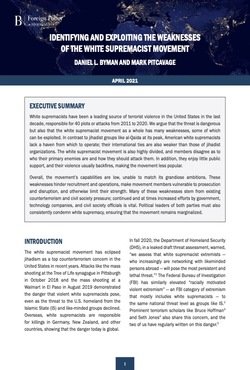This paper provides a framework for policymakers to tailor more effective negotiation and transitional justice strategies to address root causes, break cycles of violence, and strengthen the rule of law in settings affected by violent extremism. This paper draws on an earlier paper authored by me and Mark Freeman of the Institute for Integrated Transitions (also published here on SSRN), the three case studies commissioned for that first paper (ISIS in Iraq, Al Shabaab in Somalia, and Boko Haram in Nigeria), and three newly-commissioned case studies on negotiations with violent extremist groups (Libya and the Libya Islamic Fighting Group, Uganda and the Lord's Resistance Army, and Afghanistan and the Taliban). All six case studies can be found on the website of the Institute for Integrated Transitions (https://www.ifit-transitions.org).
Barcelona: Institute for Integrated Transitions (IFIT), 2020. 204p.








